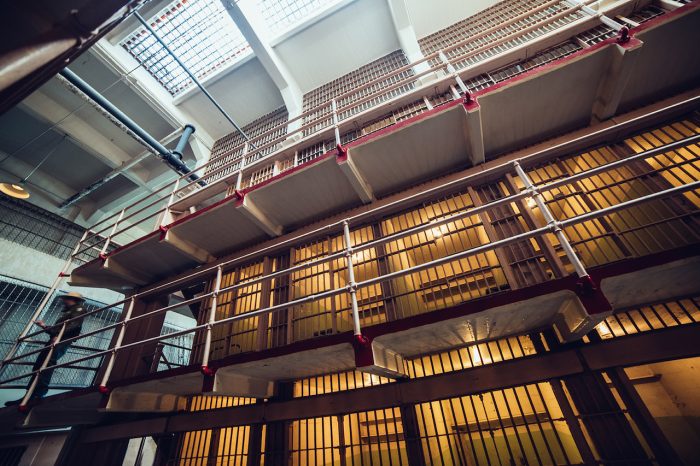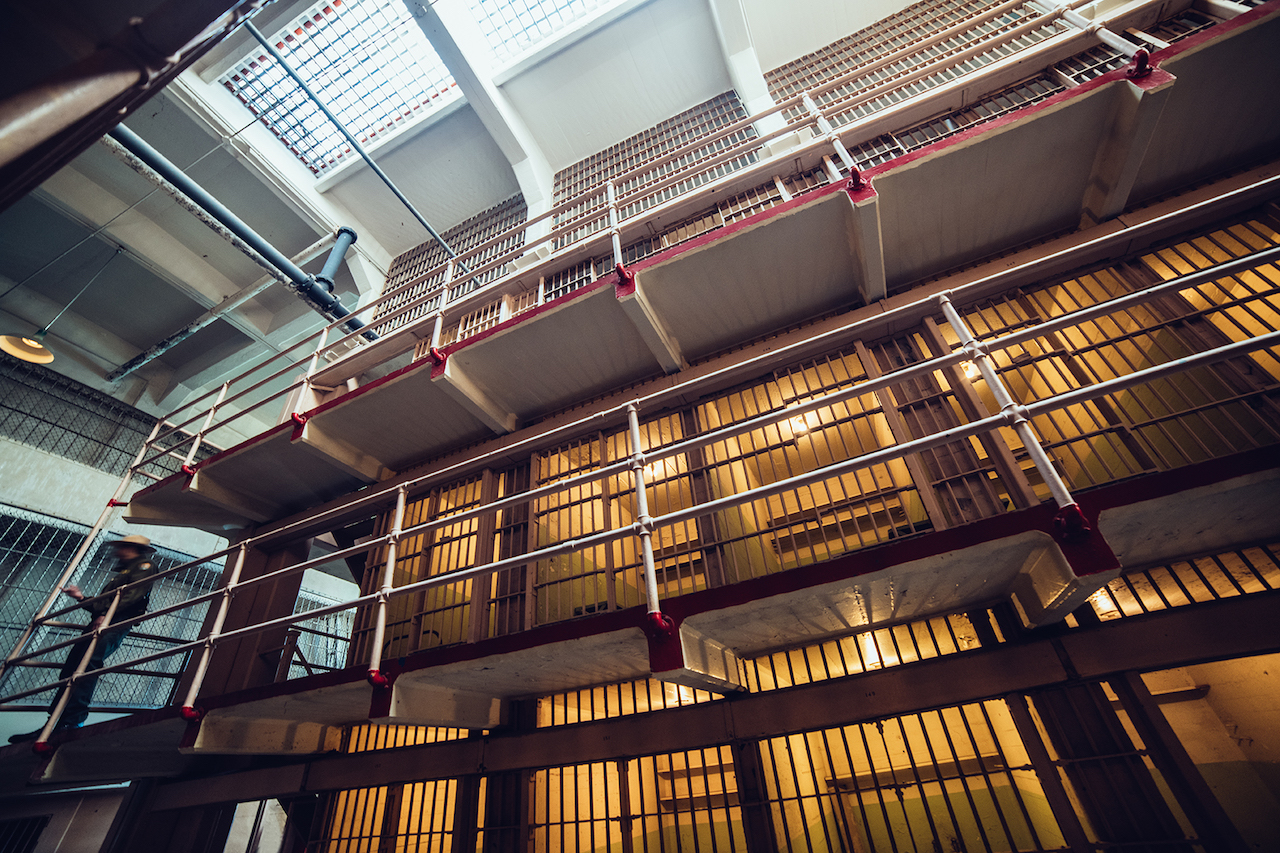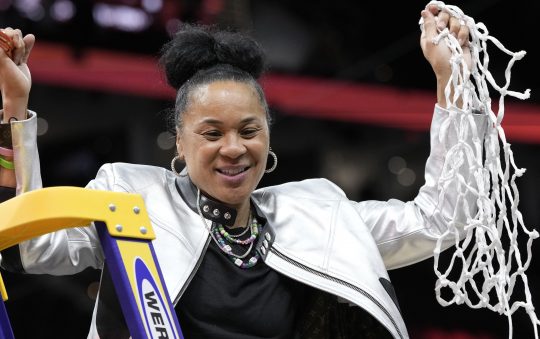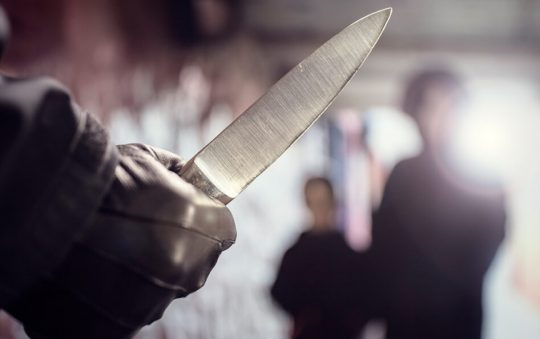
Prisoners in at least 17 states across the country went on strike this week to declare that the way they’re being treated by guards and prison officials is no longer acceptable.
The strike, which began on August 21 is scheduled to end on Sept 9. The dates are symbolic, marking the death of author and activist George Jackson by prison guards at Soledad Prison in California, and the Attica Prison rebellion. It’s still unclear exactly how many inmates are involved but prison reform advocates say this is the largest protest of its kind in history.
Dr. Heather Ann Thompson, who has written extensively on the history of policing, mass incarceration and the current criminal justice system, said the public should expect more protests from inmates who are chafing under the abuse, brutality and callous disregard exhibited by many guards.
“I’m not sure what will happen but I expect more protests. I will not be surprised if there are more eruptions,” said Dr. Thompson, a History professor at the University of Michigan and author of the Pulitzer Prize-winning book, ‘Blood in the Water: The Attica Prison Uprising of 1971 and its Legacy.’ “In a broader sense, they will continue to happen. This has been normalized but it’s so abnormal.”
“I think we have as a country has been involved for so long in the War on Drugs and the War on Crime that we have forgotten that it’s not normal. We have a whole generation of children for whom it’s normal to be pulled over, be arrested and shuttled into the system. We have been in a catastrophic prison crisis for decades now. And conditions have gotten even worse. South Carolina was a wake-up call for people.”
She was referring to violence that erupted at Lee County Correctional Institution which left seven inmates dead.
“There is so much overcrowding that prison officials chose to put rival gangs in the same dorms. Guys were sending me videos of what was happening,” Dr. Thompson recalled. “Guys were stabbed to death and the guards were absent for 7 hours. The only way we know is because they recorded it on their cell phones.”
Representatives of the striking prisoners said inmates in institutions across 17 states are taking part by refusing to work anywhere in prisons buildings, kitchens, laundries and on prison grounds. Palestinian inmates abroad have expressed solidarity and about 300 prisoners in Nova Scotia, Canada joined the strike. According to published reports, more than 150 organizations, including BYP 100 and the NYC Jericho Movement, have expressed solidarity with the strike, and solidarity rallies outside prisons have been planned in at least 10 cities.
The 19 days of peaceful protest was largely organized by the prisoners themselves, said a spokesman for Jailhouse Lawyers Speak (JLS).
“Fundamentally, it’s a human rights issue,” stated a JLS statement released before the march. “Prisoners understand they are being treated as animals. Prisons in America are a warzone. Every day prisoners are harmed due to conditions of confinement. For some of us, it’s as if we are already dead, so what do we have to lose?”
The strike is organized by an abolitionist coalition that includes the Incarcerated Workers Organizing Committee (IWOC), the Fire Inside Collective, Millions for Prisoners and the Free Alabama Movement. JLS activists began preparing the action in April after the debacle in South Carolina.
“We want to note that although there aren’t widespread reports of actions coming out of prisons, people need to understand that the tactics being used in this strike are not always visible,” said Jared Ware during an August 22 press conference call. “Prisoners are boycotting commissaries, they are engaging in hunger strikes which can take days for the state to acknowledge, and they will be engaging in sit-ins and work strikes which are not always reported to the outside. As we saw in 2016, Departments of Corrections are not reliable sources of information for these actions and will deny them and seek to repress those who are engaged in them.”
“We have spoken with family members who have suggested that cell phone lines may be being jammed at multiple prisons in South Carolina, and New Mexico had a statewide lockdown yesterday. The departments of corrections in this country are working overtime to try and prevent strike action and to try and prevent word from getting out about actions that are taking place.”
Mr. Ware, a freelance journalist who was asked to be part of team that coordinated with the press, said inmates organized nationally and carefully crafted the demands, strategically whittling them down from 35 to 10. The decision to strike, he said, was prompted by the violence in South Carolina, an understanding of how the state contribute to the violence and the changes necessary to prevent a repetition of the violence.
“This is a human rights campaign and each of these demands should be understood through a human rights lens,” inmate representatives said.
Prison Abolitionist Dr. Kim Wilson said several factors, including racism and the desire to maximize profits from cheap labor, drive the multi-billion-dollar prison industrial complex.
“Exploitation of prison labor is at heart of this strike,” said Dr. Wilson, a California resident and mother of two sons who are serving life sentences at Vaughn Correctional Facility in Delaware. “Some people are making zero. I don’t want people to get the idea that this it’s an at-will job. It isn’t a system where people have choice to work. And nearer to the release date, you are expected and required to work.”
“At the largest wildfire in Mendocino County, thousands of inmates are fighting the fires. The reason is to save property. Prison officials try to sell the idea of this being rehabilitative but that’s not true.”
Dr. Wilson cited examples nationally of other work inmates are forced to do. In Angola Prison in Louisiana – often characterized as perhaps the most brutal prison in the United States – inmates train and breed thoroughbreds and others pick cotton on The Farm. Inmates elsewhere work on pepper and strawberry farms, she said.
“You also have prisoners building furniture for schools and universities, sewing Little League team uniforms and making military equipment, like helmets. This is not a small operation,” said Dr. Wilson.
The prison system, she contends, must be dismantled but until then, prison officials and the larger society must confront and address societal issues that cause black and brown people to end up behind bars.
“As a prison abolitionist, I see prisons as part and parcel of problem,” she said. “I don’t know how they (the guards) sleep at night. Those individual people are part of a larger system. I’m more concerned with the system as a whole. We want an end to the physical places we call prisons and conditions that make it possible in our society. But we can’t do this without addressing underlying issues such as capitalism, gender violence, ableism all of which are deeply implicated in the broader prison system.”
Dr. Thompson agreed.
“What cannot be understated or ignored is the fact that this is created and driven by racism,” she said. “Seven point five million Americans are in the system. Most would not be here if they were the children of white lawyers, doctors and politicians. People turn a deaf ear to reform because white folks often don’t see Black children as children, and think that black people can absorb more trauma than they can.”
“Authorities cannot lock up 2.5 million people and have the trauma we have and it go on indefinitely. The incarcerated will continue to protest and people will continue to seek release,” she said.







